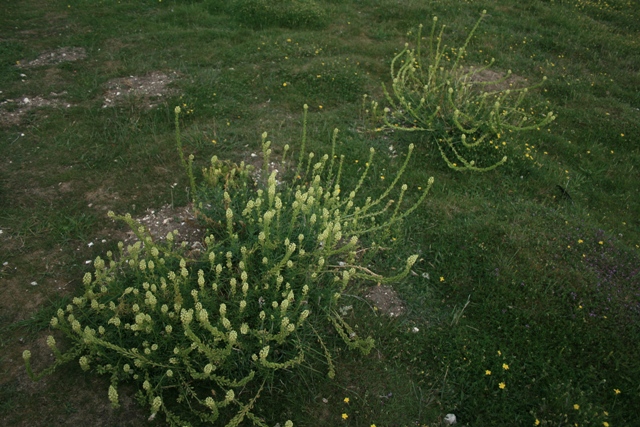
This week I like to introduce the uses about the Mignonette (or Resedaceae) family here on the British Isles with only 5 species mentioned in Stace, whereby just 2 are native and 3 are introduced species.
I got inspired to write this post as I noticed the Weld plant on a boatyard we visited last week. I love the rosettes of wrinkly leaves and the tall spikes of small flowers.
All the information found is again from various Floras and websites and the links for those are provided. Have utilized the info in our very own Flora of Birmingham and the Black Country this time which is produced by Ecorecord. Pictures by Matt Summers, Mike Poulton and Wikipedia.
Contents:
Reseda luteola or Weld
Reseda lutea or Wild Mignonette
Reseda alba or White Mignonette
Reseda odorata or Garden Mignonette
Reseda phyteuma or Corn Mignonette
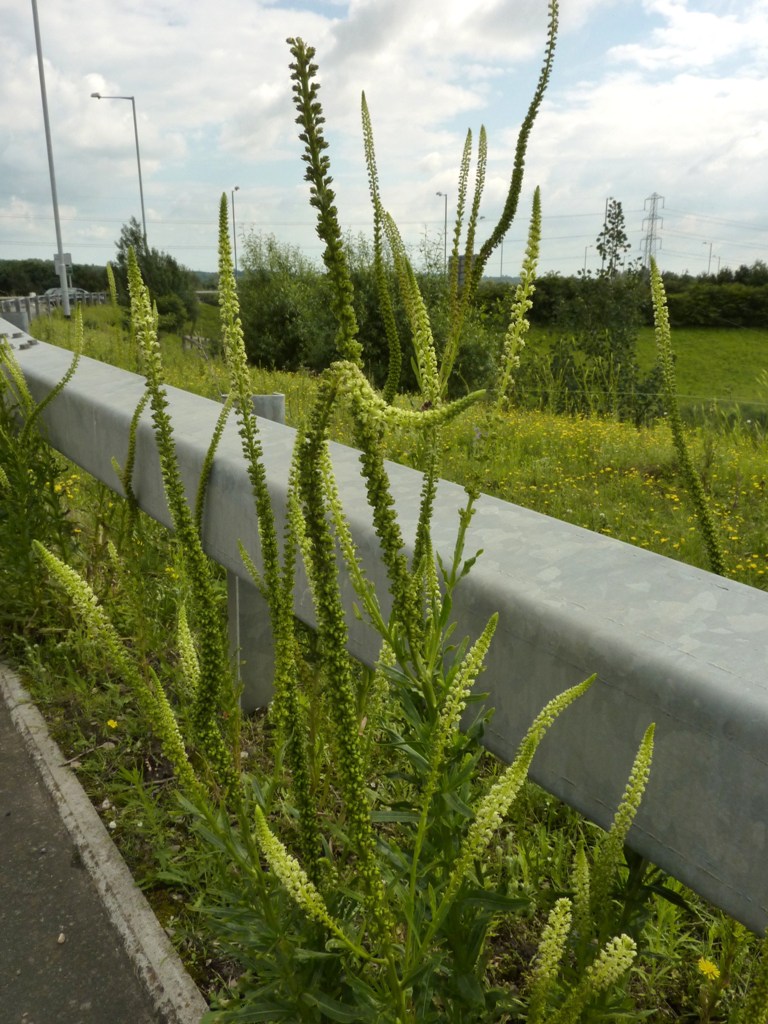
Reseda luteola or Weld and Dyer’s Rocket;
which is also a suitable name I think, is the most common species and an archaeophyte. It is biennial which means it shows its rosettes in the first year and then flowers, sets seeds and dies the following year. From the Flora of B’ham and the B.C. :
‘Typically found on waste land, recently disturbed or recovering from disturbance, and commoner in industrial and inner urban areas than in residential areas. Many records are associated with canal land, disused railways, brickworks, sewage works, landfill sites, country parks, playing fields, etc., on base-rich and fertile, often rubbly soils.’
Interesting facts:
The plant is rich in luteolin, a flavonoid which produces a bright yellow dye. The yellow could be mixed with the blue from woad (Isatis tinctoria) to produce greens such as Lincoln green. The dye was in use by the first millennium BC, and perhaps earlier than either woad or madder.
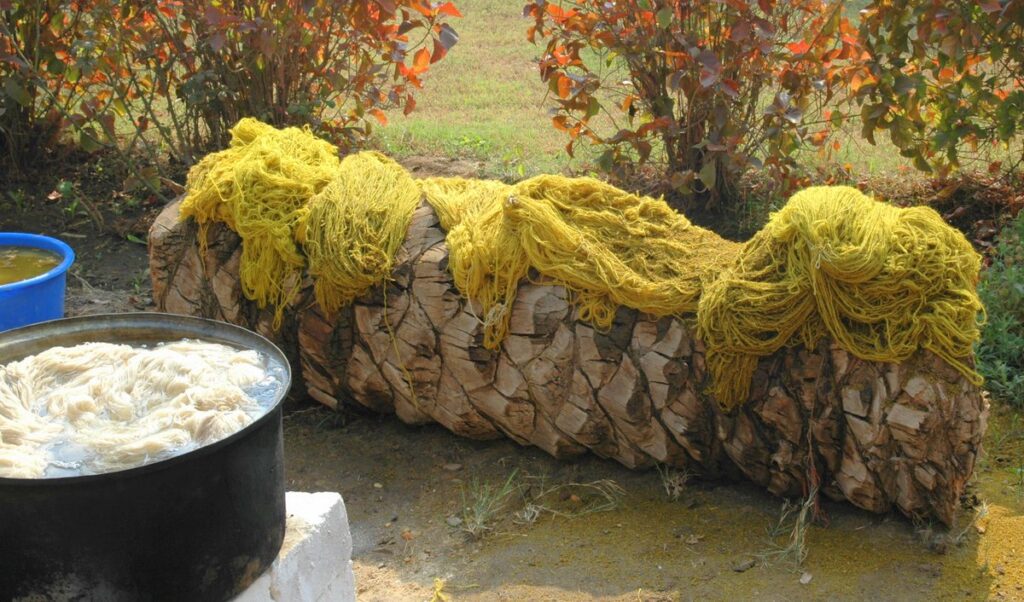
Dye from weld serves equally for linen, wool, and is particular good for silk, dyeing with proper management all shades of yellow, and producing a bright and beautiful colour.
It has very little therapeutic tradition except that the combination of volatile oil in the flowers with the flavones and glycosides in the leaves, taken as a tea, is a stimulant to the digestion while relaxing tension.
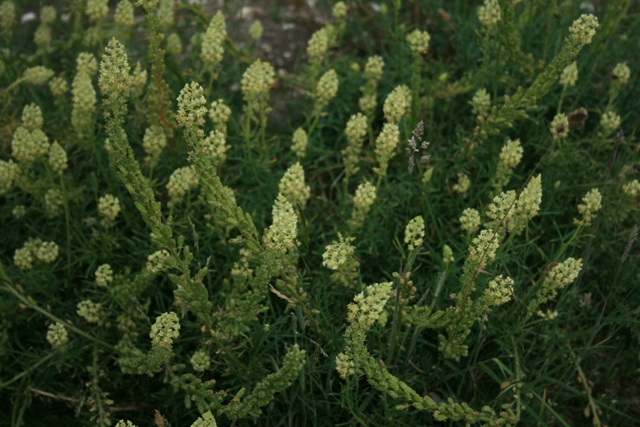
Reseda lutea or Wild Mignonette
Reseda lutea is the Wild Mignonette and grows on waste and arable land, especially on calcareous soils. Not as fragrant as R. odorata and R. alba, but it still has a musky scent.
The leaves are eaten by the caterpillars of various butterflies, including the Cabbage White, Bath White and Orange Tip.
Interesting facts:
The name ‘mignonette’ comes from the French ‘mignon’, meaning ‘dainty’.
In the Language of Flowers mignonette means ‘Your qualities surpass your charms’.
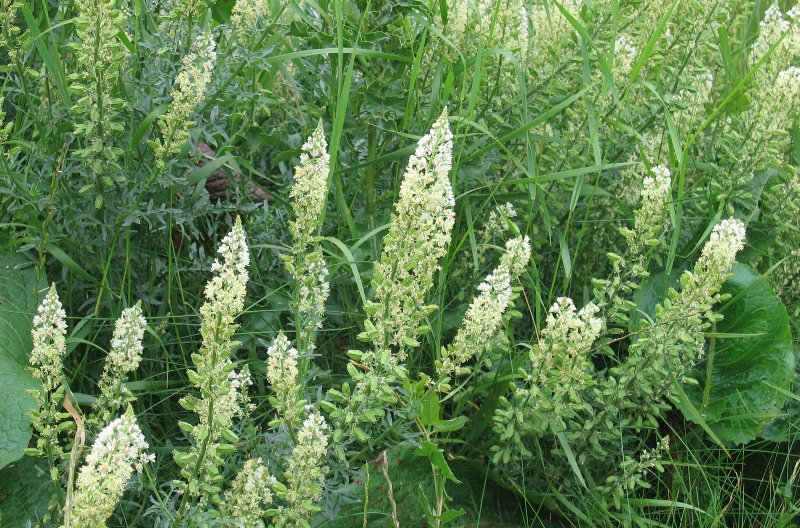
Reseda alba or White Mignonette and here
This is an attractive neophythe and has a few records from disturbed ground on post-industrial wasteland in Birmingham and the Black Country.
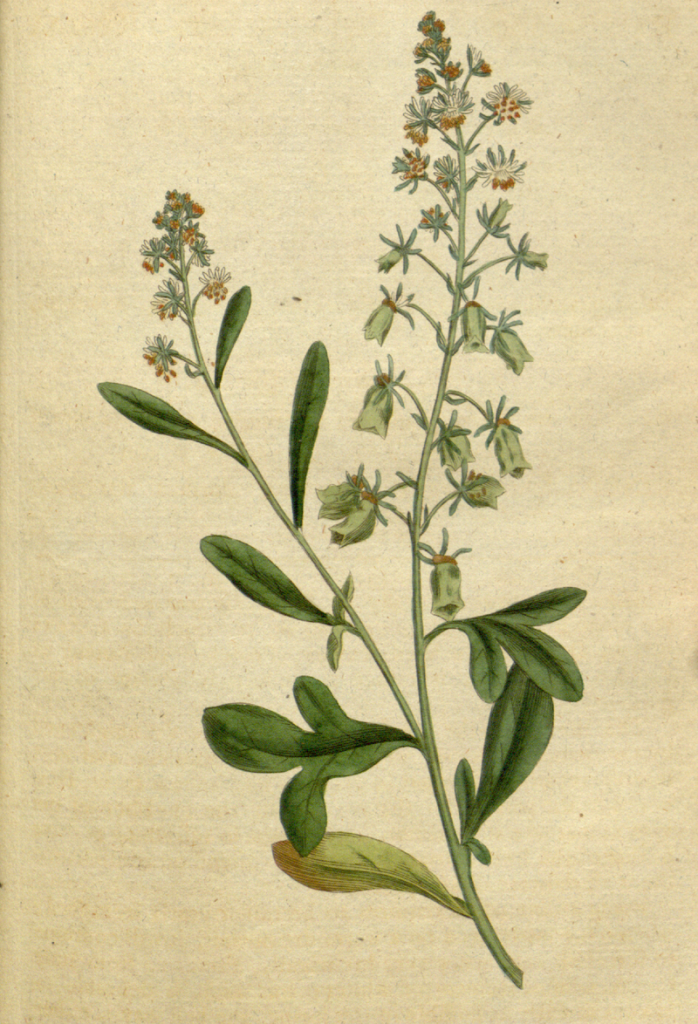
Reseda odorata or Garden Mignonette
Another mignonette, not native, called the Garden Mignonette or Reseda odorata is well worth growing due to its lovely scent! I have been growing it in hanging baskets this last season on our allotment for this reason. It is supposed to be annual although it survived last year’s winter!
Reseda phyteuma or Corn Mignonette
An annual or biennial herb, found naturalized in arable fields, and occurring as a casual on waste ground. It formerly arose from wool shoddy, but in recent years is a grain contaminant.
